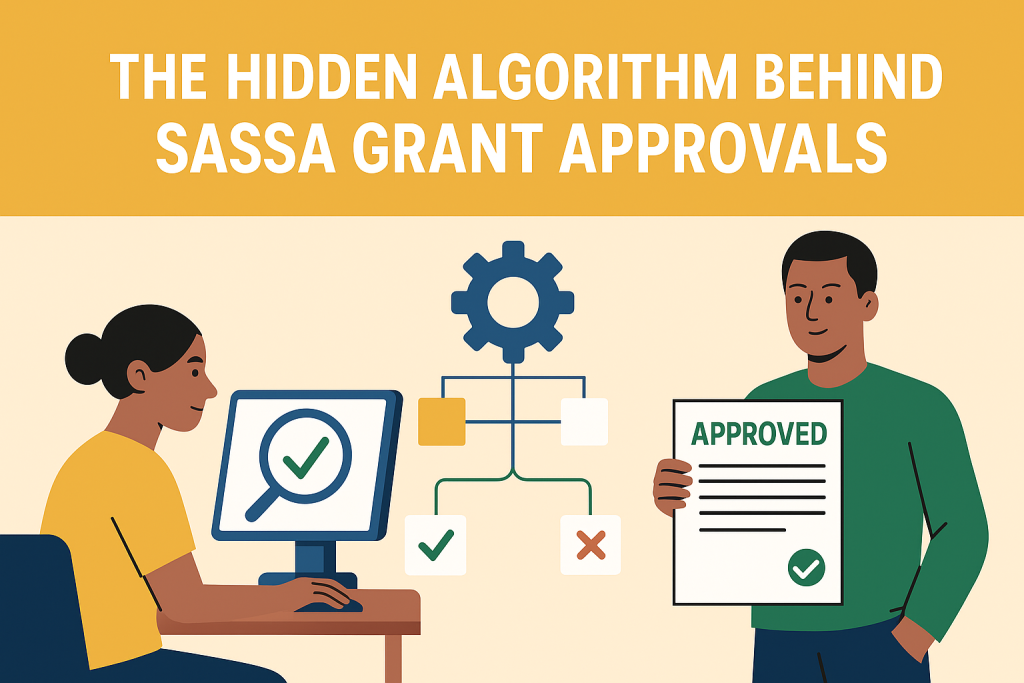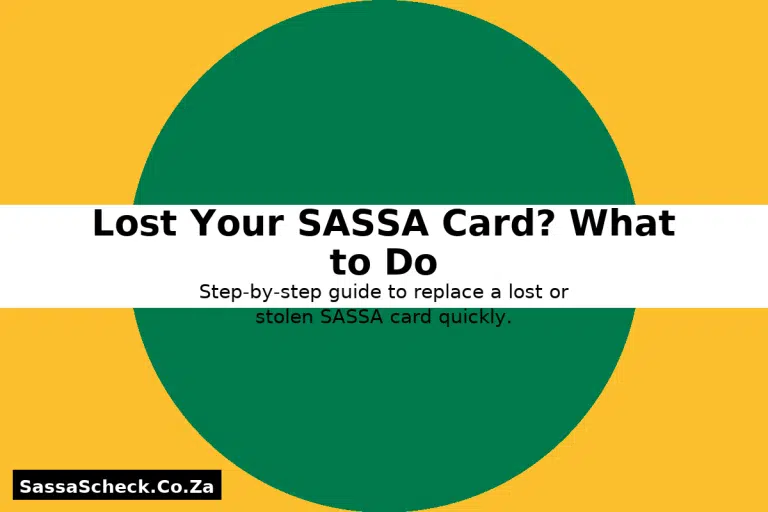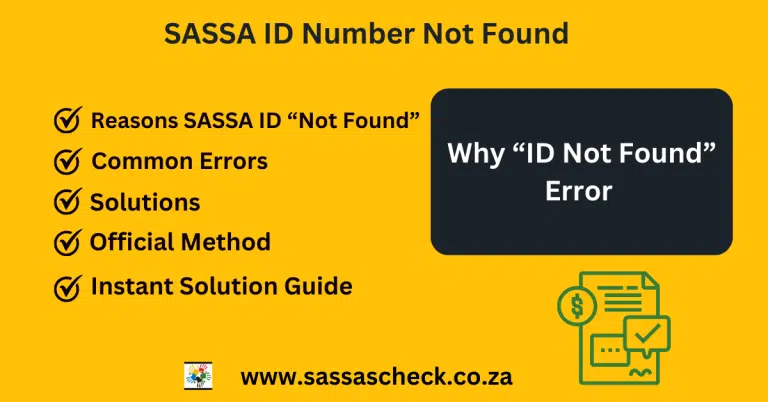The Hidden Algorithm Behind SASSA Grant Approvals
For millions of South Africans, a SASSA grant is the only stable income they have. Yet few understand how SASSA actually decides who gets approved and who gets rejected. The decision process is not random it is built on a hidden algorithm that weighs multiple data points behind the scenes. This article explores how that unseen system works, using insider insights and field-level information rarely discussed publicly.

What the Algorithm Really Is
When people talk about “SASSA checking your information,” it’s not a human officer going through every file. Instead, applications move through an automated eligibility engine a rule-based algorithm that compares your personal and financial details across national databases. It filters, flags, and scores every applicant before a person ever sees the file.
This internal engine is linked to systems from Home Affairs, SARS, UIF, and the Department of Labour. It pulls information to confirm if a person has formal income, government employment, or duplicate records. Only once all these cross-checks return clean does the system give a green signal for approval.
The Step-by-Step Logic
Every application passes through three silent phases:
Initial Data Match
The system first validates your ID, birth record, and citizenship. Any small mismatch like an incorrect digit in your ID or a surname variation automatically triggers a “data mismatch” code.
Financial Screening
Next, the engine screens for income or social benefits. If your name appears on any payroll or UIF record, it marks you as “potentially ineligible.” This doesn’t mean rejection, but it delays your case until verification.
Scoring and Approval
Finally, the algorithm assigns a confidence score. Applicants with complete, clean, and verified data are automatically approved. Those with inconsistencies go into a manual review queue, which can take weeks.
Why Some People Get Stuck in Pending
The “Pending” status many people see is not always a waiting list it’s often a flag within the system. It could mean your file sits in the middle of a verification loop. Sometimes, a single unmatched data point, like an old address or shared bank account, causes endless re-checks.
In many cases, older applications remain trapped because the system keeps them in review even when they’ve already passed manually. This internal communication gap is one of the main causes of long delays.
Internal Weighting Rules
What makes this algorithm more complex is that not all checks carry the same weight. For example, income verification weighs more heavily than bank verification. That’s why someone with a recent UIF payment may get rejected even if they currently have no job.
These weighting rules are updated periodically based on internal circulars but they are never made public.
The Human Override Layer
Although the algorithm plays the biggest role, a SASSA verification officer can still override it. When field offices receive flagged applications, they check supporting documents manually. However, these officers rely on limited visibility they see only what the system allows them to view. This means a local office might not even see why your application failed if the flag was raised at a different stage.
Why Transparency Is Missing
SASSA has never publicly explained the algorithm’s criteria. This is partly due to the need to prevent fraudsters from gaming the system, but also because the system was built through layers of different IT contractors over the years. No single department owns the full logic. As a result, beneficiaries are left in the dark about why some approvals happen instantly while others never move.
The Impact on Real People
Behind every “Pending” or “Declined” status is a person waiting for survival income. The automated nature of the system removes empathy from the process. Many rural applicants who submit manually typed forms don’t realise that even a missing middle name or outdated ID causes algorithmic failure. Once the system rejects them, there’s little human review unless they visit an office physically.
The Future of SASSA’s Algorithm
Officials inside SASSA have quietly acknowledged the need for a transparent scoring model. A newer digital review project is being tested to allow beneficiaries to see “which step” their application is in not just a vague status. This project is expected to integrate clearer reasons for declines and include AI-based fraud detection tools, but no timeline has been released yet.
Conclusion
The SASSA approval system is more than paperwork; it’s a coded algorithm that silently judges eligibility. Understanding its layers helps explain why some people are approved quickly while others wait for months. Until transparency improves, beneficiaries will continue to rely on guesswork rather than clear feedback. But as awareness grows, pressure for accountability may finally force the system into the open revealing how the nation’s most important social safety net truly operates.






